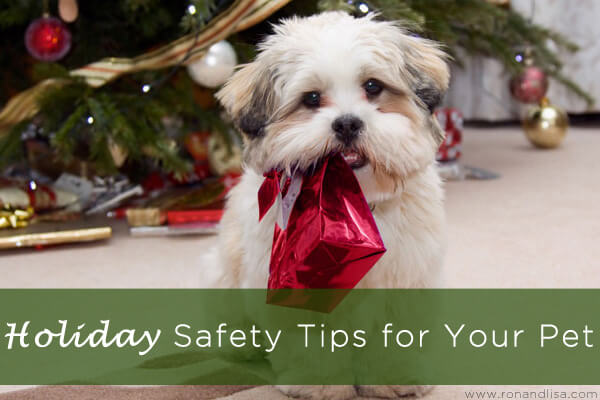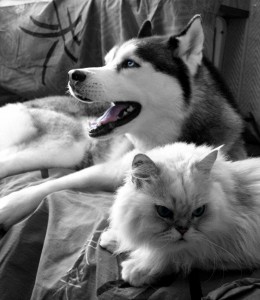

Ron & Lisa’s Tip #1: Need a handy guide to take when pet shopping? Download this for free!
StatePoint – Home for the holidays can mean colorful decorations, sumptuous food and spirited cheer between friends and family. Unfortunately, it can also mean danger for the family pet.
Sweets, decorations and a multitude of guests can adversely affect your pet’s health and behavior.
“There are lots of pet hazards during the holidays, but the right training can keep your dog safe,” says Dawn Sylvia-Stasiewicz, trainer of Senator Ted Kennedy’s dog Splash and Bo Obama, the First Family’s dog, and author of the new book “The Love That Dog Training Program.”
Common holiday decorations and treats that are toxic to dogs and other pets include mistletoe berries, poinsettia leaves, tinsel and water from a tree stand. In addition, your dog’s appetite for unattended holiday chocolates, poultry bones or holiday decorations can result in emergency visits to the vet.
To keep pets safe, try keeping things out of reach or make them inaccessible, such as using a tree skirt to keep dogs from drinking water in a tree stand. But solid training based on positive reinforcement, especially for that new puppy you got for the holidays, is often the best prevention technique.
“Canine communication is usually visual, not verbal,” says Sylvia-Stasiewicz. “Starting off with hand signals for ‘sit,’ ‘down,’ and ‘stay,’ encourages your dog to watch you closely, thereby making them more obedient once you add a verbal cue.”
You should also positively reinforce good behavior in your dog instead of punishing bad behavior. That means your dog should come to understand that when he sits, he gets a reward — either a toy or a treat.
“Dogs love making trades for something of equal or lesser value,” Sylvia-Stasiewicz says. “If you teach your dog that bringing you a particular object will result in him receiving a more desirable alternative, such as a favorite toy or treat, then he’ll be less likely to hold onto dangerous holiday decorations.”
For anxious dogs, incessant doorbell ringing and an abundance of guests may be unnerving, leading them to act out. In order to give dogs a sanctuary, Sylvia-Stasiewicz recommends rewarding dogs for spending time in their crate. That way, they begin to associate their crate as a safe haven from the party, not a jail from which to escape.
For more tips on training dogs to be safe during the holidays, check out Sylvia-Stasiewicz’s new book with Larry Kay, “The Love That Dog Training Program.”
“The lessons learned from good parenting are also applicable in the dog world,” says Sylvia-Stasiewicz. “Fortunately, it’s never too late to teach an old dog new tricks.”
Ron & Lisa’s Tip #2: As a natural deodorizer, baking soda can be sprinkled onto rugs and carpets and vacuumed after 10 to 15 minutes. Or, mix the baking soda with a drop or two of essential oils or dried lavender before shaking onto carpet, and let sit for an hour or longer.
For holiday gift ideas for pets, check out our PET GIFT GUIDE!


